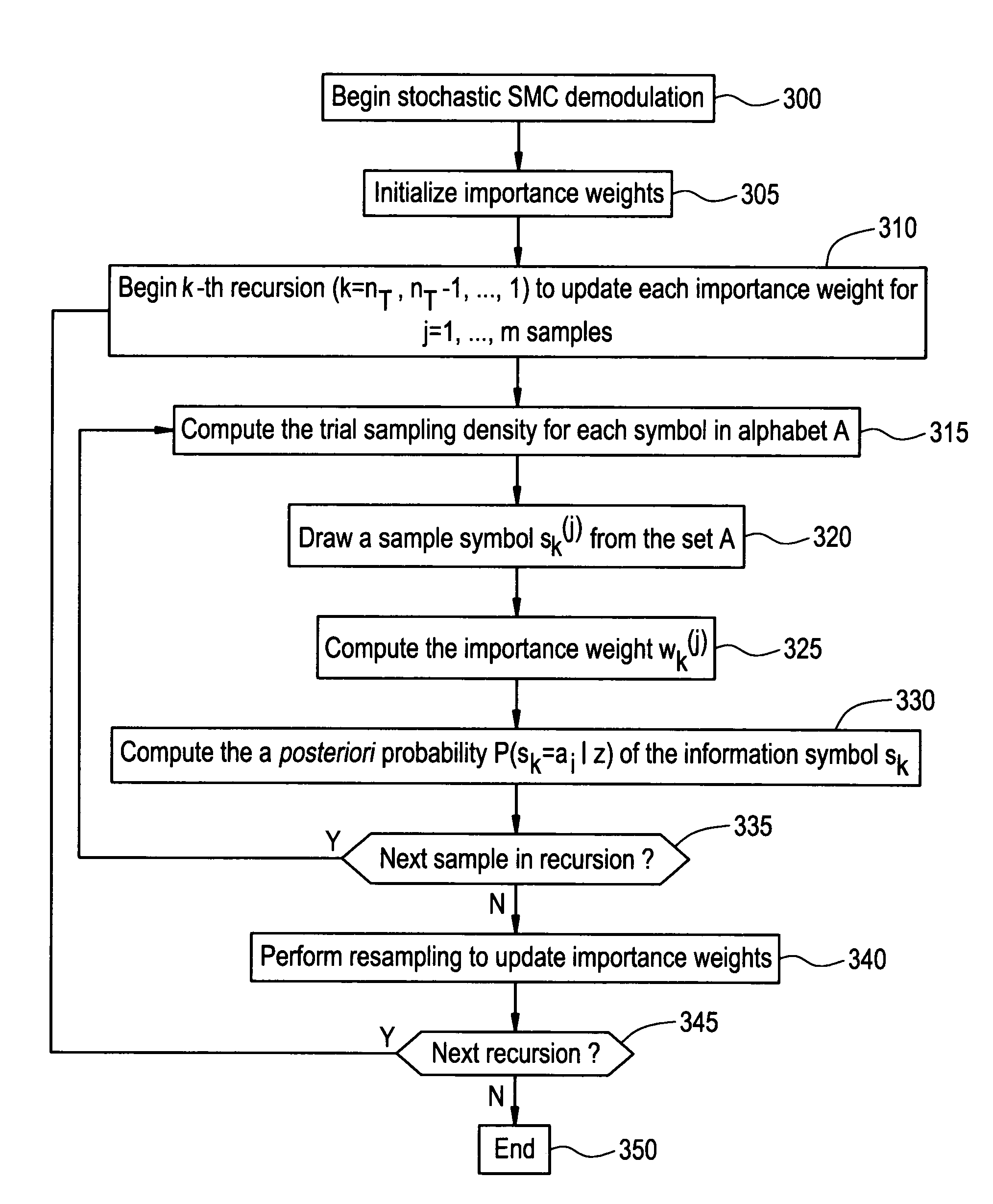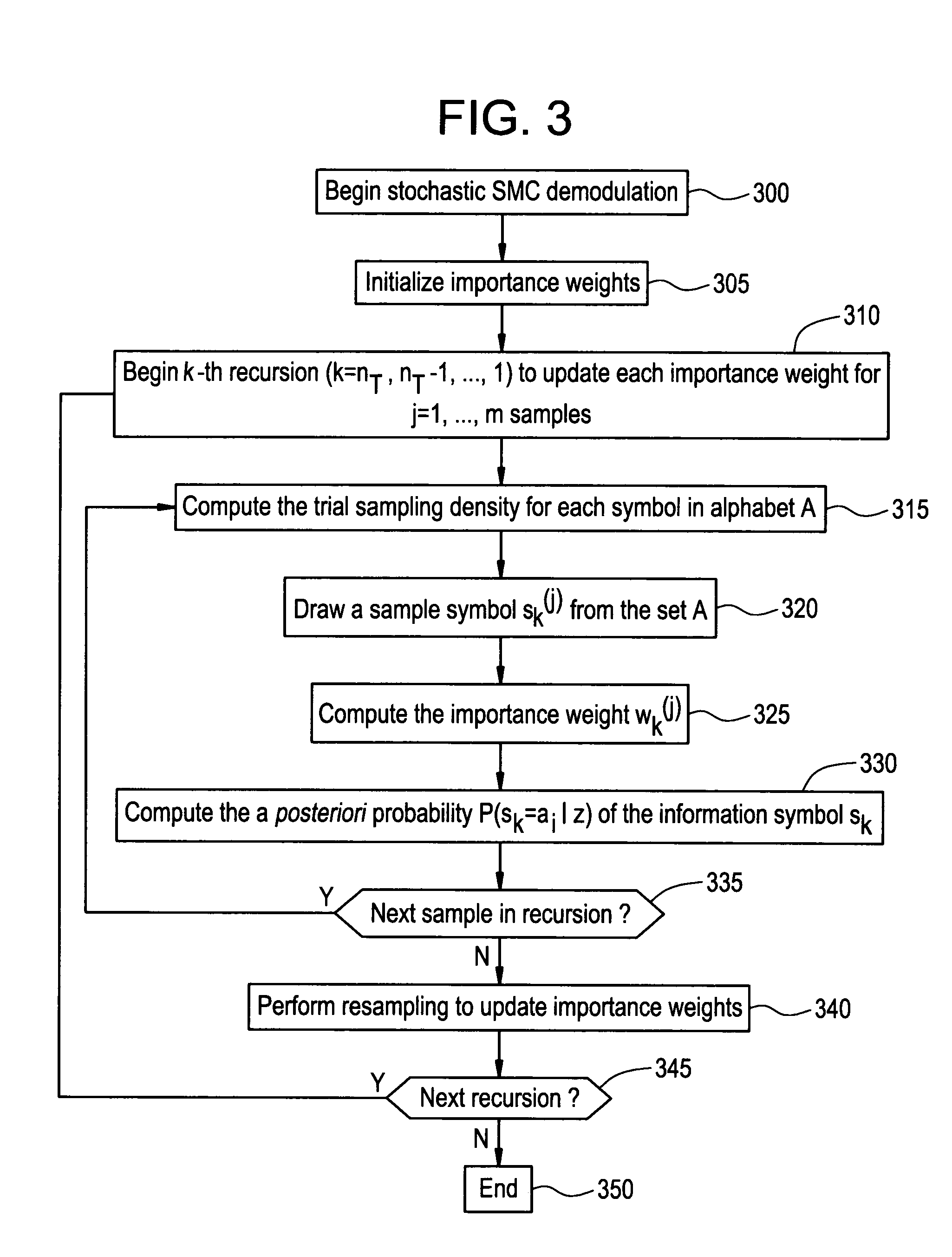Near-optimal multiple-input multiple-output (MIMO) channel detection via sequential Monte Carlo
a multi-channel, sequential technology, applied in the direction of amplitude demodulation, line-fault/interference reduction, instruments, etc., can solve the problems of affecting the performance of the receiver, so as to achieve the effect of improving the receiver performance and further improving the receiver performan
- Summary
- Abstract
- Description
- Claims
- Application Information
AI Technical Summary
Benefits of technology
Problems solved by technology
Method used
Image
Examples
Embodiment Construction
[0025]The description is organized as follows. Section 2 describes the system under consideration. Background materials on the SMC methodology are provided in Section 3. In Section 4, we derive the new class of soft MIMO demodulation algorithms using the stochastic SMC and the deterministic SMC, based on the simple nulling and cancellations BLAST detection scheme. Computer simulation results are provided in Section 5, and conclusions are drawn in Section 6.
[0026]2 System Descriptions
[0027]In this section, we consider a generic coded MIMO system with a turbo receiver. The transmitter and receiver structures are shown in FIG. 1 and FIG. 2, respectively. In FIG. 2, IT denotes the interleaver and IT1 denotes the deinterleaver.
[0028]2.1 Transmitter Structure
[0029]At the transmitter 100, a block of information bits {a1} are encoded into code bits {bi} at a channel encoder 10. The code bits are then randomly interleaved at an interleaver 120 and mapped to an M-PSK or M-QAM modulation symbo...
PUM
 Login to View More
Login to View More Abstract
Description
Claims
Application Information
 Login to View More
Login to View More - R&D
- Intellectual Property
- Life Sciences
- Materials
- Tech Scout
- Unparalleled Data Quality
- Higher Quality Content
- 60% Fewer Hallucinations
Browse by: Latest US Patents, China's latest patents, Technical Efficacy Thesaurus, Application Domain, Technology Topic, Popular Technical Reports.
© 2025 PatSnap. All rights reserved.Legal|Privacy policy|Modern Slavery Act Transparency Statement|Sitemap|About US| Contact US: help@patsnap.com



